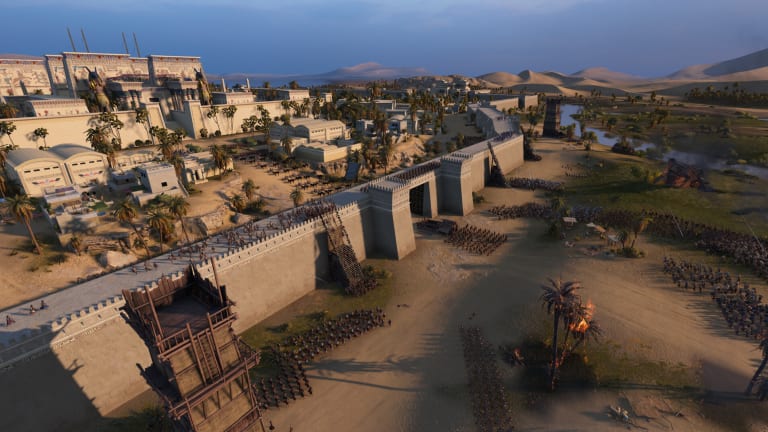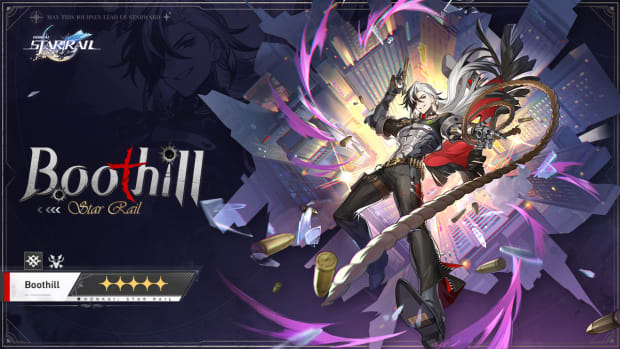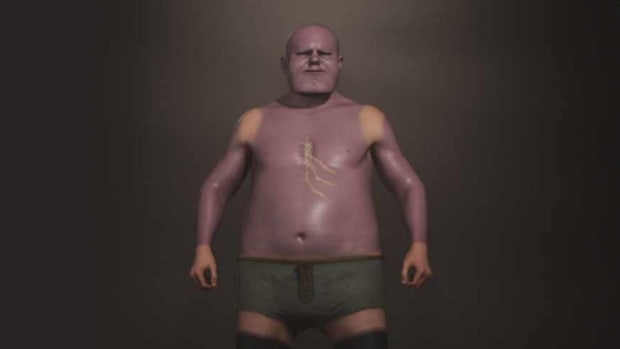
Total War: Pharaoh – all confirmed units

Total War: Pharaoh is the next historical title in the strategy game series by Creative Assembly and throws players into the chaos of the Bronze Age Collapse starting with the death of Pharaoh Setnakht in 1186 BCE, who had only ruled Egypt for a couple of years at that point.
This was a trying time for the Eastern Mediterranean: Earthquakes and a string of droughts already wrought havoc in the region, leading to economic hardship and social unrest, and then the so-called Sea Peoples, a bunch of maritime raiders migrating to the area, arrived and added to those woes. Bronze Age civilizations depended on a closely interlinked network of international trade to get a steady supply of tin (a rare metal that had to be brought all the way from Britain and Afghanistan) and copper to produce bronze – this system’s breakdown further exacerbated all the other problems. At the end, only a heavily weakened Egypt remained of the erstwhile great Bronze Age empires of the region.
It’ll be on you to somehow stop this systemic collapse and make sure your culture survives. You can play as factions from Egypt, the Hittites of Anatolia, and the Canaanites living in the Levante in Total War: Pharaoh. Egypt and the Hittites were the two dominating powers at this point, while Canaan was their battleground and will likely be a bit of an underdog in the game.
How did Late Bronze Age warfare work, though? Which units can you expect in Total War: Pharaoh? We’ll try and give you a short introduction, diving into possible troop types for the game and checking out which units have already been confirmed.
Total War: Pharaoh – how did Late Bronze Age warfare work?
Bronze Age warfare revolved around war chariots – these vehicles were complicated to craft, very expensive to produce, and required horses to be especially bred and trained to pull them, but they were the time’s ultimate weapon regardless.
Things like saddles and stirrups weren’t really a thing back then, so cavalry was exceedingly rare – mostly used as scouts and messengers. Instead, chariots were used to provide stable and mobile firing platforms for archers. They could mass up and charge at infantry lines as well, breaking them due to the immense amount of psychological pressure such a sight created on enemy foot troops. However, they mostly acted as ranged units, staying away from the enemy while launching arrows.
Chariots would drive close to the enemy lines, launch their missiles, and flee whenever infantry, which usually was packed in a dense phalanx, tried to pursue them. Friendly infantry basically had only two jobs at this time: provide protection for their chariots while they were restocking ammunition or being repaired, and exploiting any breakthroughs made by the chariots in case they charged home. Naturally, chariots are only effective on flat ground, but since most of the areas being fought over in this region were composed of exactly that, this wasn’t a big problem.
Egyptian war chariots were very lightweight and quick. They had crews of two men at this time: one driver and one archer. They’d transport lots of arrows as well as a shield and a spear just in case they were needed.
Hittite war chariots on the other hand were a bit heavier and slower, carrying crews of three: one driver, one archer, and one shielded spearman.
Today’s popular image of war chariots with scythes mounted on its wheels stems from a later period, so having those in the game wouldn’t exactly be accurate.
The Sea Peoples then changed the rules. They are depicted as wielding longswords and javelins, which makes historians believe that they fought in flexible and loose formations as skirmishers. That made them a lot more mobile than the infantry of the local empires, which would have enabled them to get close enough to the chariots to wound horses and crews.
As mentioned above, chariots were extremely expensive and each loss was keenly felt. Egypt and the other empires of the area had no problem with incorporating captured chariots and their native crews into their own squadrons, such was the value of each vehicle. When you combine the higher chariot losses in combat with the economic problems described in the opening paragraph, then you’re starting to get the picture of how challenging this must have been for local militaries to cope with.
As a result, warfare in the region changed forever: We know that the Egyptians increased the amount of infantry in their armies to compensate for the weakness of their chariots against the Sea Peoples. Ramesses III. – one of the faction leaders you can play as – boasted on his triumphal monument that he mobilized every single spearman in Egypt for his final battle against the Sea Peoples, the Battle of the Delta.
This monument is telling: While the Pharaoh’s war chariot is depicted in a prominent way as a symbol of power and martial prowess, it remains unused – Ramesses is fighting as a foot archer. No other chariots are visible. Instead, masses of infantry with bows, shields, spears, daggers, and curved swords (the iconic khopesh) are shown to do the fighting.
Compare this to Ramesses II.’s monument celebrating the Battle of Kadesh against the Hittites, thought to be the biggest chariot engagement in history.
Chariots did not completely fall out of use overnight, of course. Even the Sea Peoples tried to integrate them into their armies, though without much success as the Battle of Djahy shows, where Ramesses III. halted their advance over land.
Infantry was mostly equipped with shields and a melee weapon – spears, daggers, curved swords, maces, and axes all being represented. Archers, who used state-of-the-art composite bows, were prominent as well. In terms of skirmishers, slingers and javelin-throwers had a long tradition in the region.
Armor and helmets were mostly textile-based, though since many troops were just militia units they might not have worn any protection. Bronze scale armor was used by elite troops such as charioteers and the Pharaoh’s small standing force of bodyguards. Thus, heavy infantry should be a very rare troop type.
Total War: Pharaoh – all confirmed units
Egyptian khopesh infantry with shields
Egyptian two-handed axemen
Canaanite bodyguard (spears and shields)
Canaanite swordsmen with shields
Desert Nomad archers and spearmen
Egyptian bodyguard (archers)
Egyptian bodyguard (archers)
Egyptian khopesh infantry (shields)
Egyptian khopesh infantry (shields and javelins)
Egyptian swordsmen with shields
Hittite bodyguard (spears and shields)
Hittite bodyguards (? and shields)
Hittite spearmen and swordsmen (shields)
In addition, we have the official names of the following units:
- Medjay Archers (Egyptians)
- Medjay Swordsmen (Egyptians)
- Armoured Hittite Skirmishers (Hittites)
- Marauding Axe Chargers (Canaanites)
- Egyptian Chariots (Egyptians) – light bow chariots
- Hittite Chariots (Hittites) – heavy spear chariots
- Upper Egyptian Mace-Axe Warriors (Egyptians)
- Sherden Axe Bodyguards (Egyptians)
We’ll make sure to update the list of confirmed units whenever we see additional gameplay footage.


















